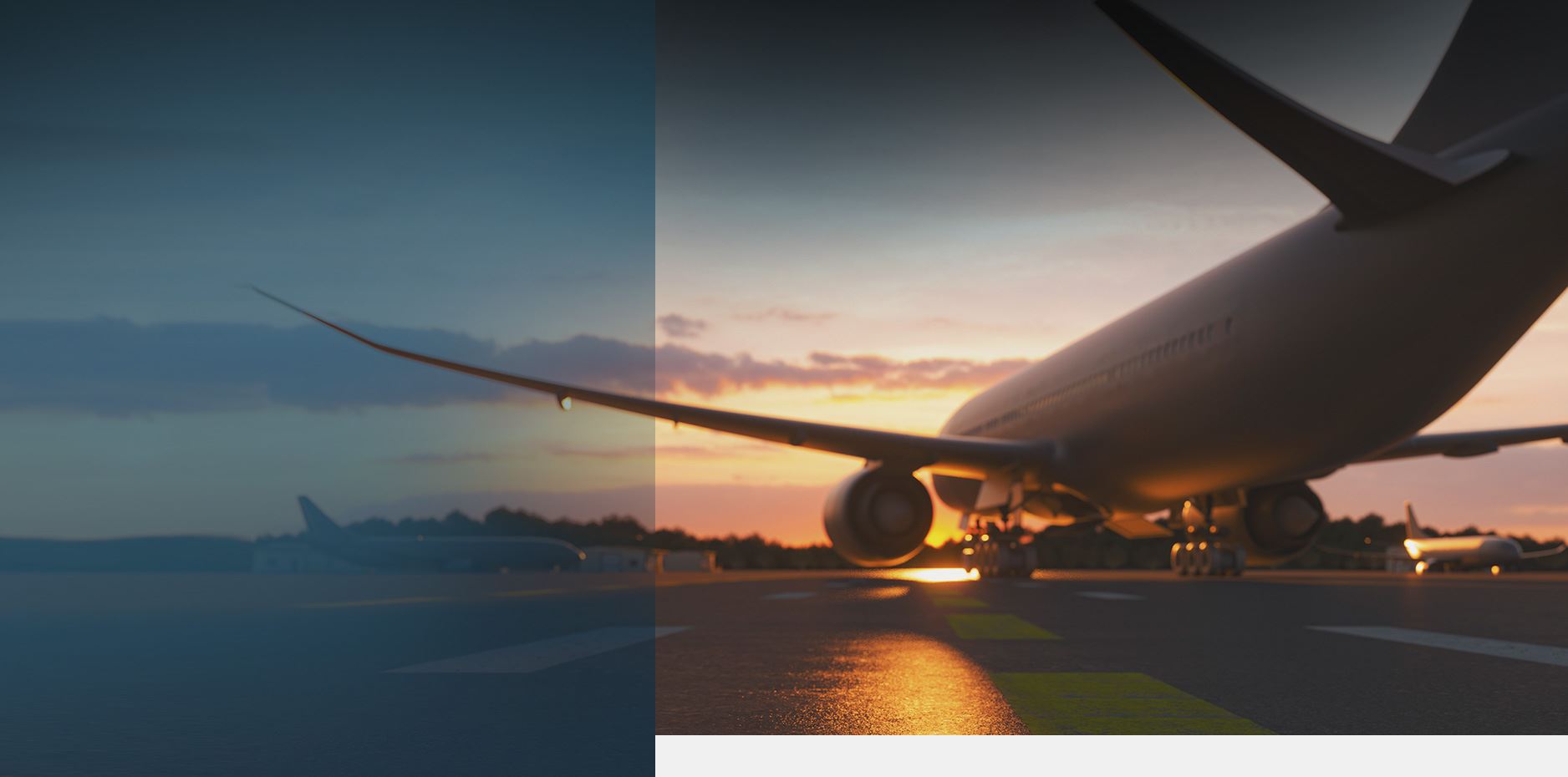
Why Planes Crash
Aviation Accident Lawyers Committed to Helping Victims of Crashes
Aviation accidents can be traced to a variety of causes, including pilot error, air traffic controller error, design and manufacturer defects, maintenance failures, sabotage, or inclement weather. An experienced aviation attorney can help you to pursue a claim by identifying any potential helicopter or plane crash causes, as well as the parties responsible.
If you or a loved one have been involved in a plane or helicopter crash, contact the experienced aviation accident attorneys of Wisner Baum to discuss your case and to find answers about the cause of the crash. We offer free, no obligation case evaluations and can answer any questions you may have about your case.
Give us a call today at (855) 948-5098 to schedule a free consultation.
Investigating and Exposing the Reasons Why Planes Crash
At Wisner Baum, our lawyers have more than 40 years of experience investigating aviation accident causes and pursuing accountability. We aggressively fight against negligent defendants and pursue compensation for the victims and families of plane accidents and other aviation crashes. We thoroughly investigate and expose aviation accident causes.
To find out why planes crash in our cases, our aviation attorneys use a team of investigators and leading experts to inspect and analyze every aspect of an aviation accident, including what happened before the flight, what happened in the moments leading up to the accident, and what happened as the accident was unfolding. We assess corporate policies that may have impacted actions of those involved, listen to evidence preserved in the cockpit voice recorder (CVR) and flight data recorder (FDR) and analyze the salvaged remains of the aircraft to ensure all possible air crash causes are checked. After our investigation is complete, we pursue personal injury and wrongful death claims under product, airline, pilot, controller, or other liability theories as appropriate.

What Causes Planes to Crash?
Over the past decades, our experience handling aviation accidents has provided us with comprehensive understanding of the many common reasons why planes crash.
Below are some of the most frequently reported aviation accident causes:
- Human Factors in Aviation — According to Plane Crash Info, pilot error was found to be a factor in 53 percent of worldwide fatal accidents involving commercial aircraft between 1950 and 2010. While that statistic may seem high, consider all of the tasks that pilots are responsible for; pilots have to fly through dangerous weather, respond to mechanical issues and execute safe takeoffs and landings. Many aviation accidents are caused when pilots misread flight equipment, misjudge weather conditions or fail to properly address mechanical errors. Pilot error is considered the number one reason why planes crash.
- Crew Member Mistakes – Pilot error is not the only human factor that can cause a plane crash — it can also be due to mistakes by crew members as well. While a crash may not be the result, crew members who fail to properly store luggage or perform onboard duties, can lead to serious injuries for the passengers. An example of human error contributing to why planes crash is a case our firm handled involving a 1993 Chinese Eastern Airlines flight to Los Angeles. While flying over Alaska, the nose of the plane pitched straight down when the co-pilot mistakenly bumped an exposed lever that was to be kept under a dome glass cover. All unbuckled passengers hit the ceiling and suffered neck injuries — some even died.
- Aircraft Maintenance Negligence — A leading trend in the aviation industry is to cut corners and outsource aircraft maintenance and inspections. It has become increasingly common that the reasons why planes crash is closely tied to the airlines do the absolute minimum to keep planes in the air. in the Alaska Airlines Flight 261 crash off the coast of California, the National Transportation Safety Board (NTSB) said the crash was a “maintenance accident.” All of the 88 people aboard the plane were killed in the crash.
- Aircraft Design and Manufacturing Defects — When the aircraft design is inadequate, design engineers should be held accountable. We represented clients in a helicopter crash accident in which the metal in the yoke of the helicopter was not strong enough to withstand even normal wind conditions, resulting in separation from the tail rotor. Additionally, a Boeing study on why planes crash found that mechanical failure is a factor in roughly 20 percent of all commercial airline accidents (other studies have reached similar conclusions). Components of aircraft must be designed to withstand wind, take off, landing and the stresses of flight. If a part fails in this regard, the manufacturer must be held responsible.
- Weather — People are often quick to assume weather is a major cause for why planes crash. However, while it has been estimated that 12 percent of all air crashes are weather related, weather is very rarely the only cause involved. Most flights are grounded if dangerous weather conditions are present and failure to do so may be a sign of negligence. Even when bad weather sneaks up on pilots and air traffic controllers, pilots and crew should be able to work effectively in those emergencies.
- Sabotage — Aviation accidents caused by sabotage account for roughly 9 percent of all crashes. The September 11, 2001 hijackings, EgyptAir flight 990 and the Germanwings flight 9525 crashes are arguably some of the most notable sabotage crashes in recent history.
- Airline Corporate Negligence — The corporate airline industry is emphasizing timing, turnaround and cutting corners over public safety. Pilots and crew are being pushed by corporate policies to make unsafe landings to avoid paperwork, to fly with the minimum amount of fuel, and to make other unsafe judgment calls.In recent years, uncaring corporations have become a serious factor in why planes crash. We believe the airline policies and corporate culture contributing to these plane crashes need to be changed immediately.
- Air Traffic Controller Negligence — Our firm has successfully handled numerous runway accident cases, including one at Los Angeles International Airport (LAX) in which a federal air traffic controller’s negligence resulted in a US Airways plane landing on a SkyWest plane in 1991. The collision led to the deaths of 35 people and injured 29. this case was an example of how even the briefest moment of inattention from someone involved, even remotely, in a plane’s operation, can lead to tragedy.
Contact us at (855) 948-5098 or submit our online form to get started with a free consultation.
Key Factors in Airline Accident Cases
Visual Flight Rules / Instrument Flight Rules
Aircraft and airports operate under two different rules or systems, mostly depending on the weather. Essentially, when weather and visibility are good, aircraft are permitted to operate under visual flight rules (VFR). When weather and visibility are bad, aircraft are required to operate under instrument flight rules (IFR). The FAA (Federal Aviation Administration) sets exact guidelines as to when each system is to be used.
Glide Path or Glide Slope
When an airplane comes in for a landing, it follows what is called a glide path. The standard glide path is 3 degrees up from the runway touchdown zone, and makes for a smooth transition from regular flight to landing. It is called a glide path because in the early days of aviation most airplanes would glide in for a landing using little or no power.
Many airports, including most that handle airline traffic, have landing aids that assist the pilot in setting up the aircraft on the proper glide path/slope. Some landing aids are designed for use in VFR conditions and some are designed for IFR conditions.
Visual Approach Slope Indicator
VASI (Visual Approach Slope Indicator) is a system of lights used to aid the pilot in landing. It consists of bars of red and white lights that tell the pilot whether the aircraft is on, above, or below the glide path. If all lights are red the aircraft is below the glide path, a combination of red and white indicates on the glide path, and all white tells the pilot that the aircraft is above the glide path. VASI will guide the pilot down to about 200 feet above the ground, and to continue landing, the runway must be clearly visible.
Precision Approach Path Indicator
PAPI (Precision Approach Path Indicator) is a newer and more precise light system that operates in a similar fashion as VASI. A system of red and white lights tell the pilot where he is in relation to the glide path. PAPI is much more precise than VASI, hence the name, and is accurate to about 50 feet above the runway. This enables the pilot to fly almost down to a landing using the system.
The diagram, shows the Precision Approach Path Indicator (PAPI) system of lights. These lights will be seen by pilots beside the runway as the plane approaches to land. As can be seen, if all the lights are white, the plane is above the glide path; if the lights are all red, the plane is below the glide path. Two red and two white lights indicate the plane is right where it should be on the glide path. Other formations of the lights are found, but this diagram describes the principal type of visual aid the pilots have with the PAPI system.
When using an instrument approach, or when visibility is poor, the ILS (Instrument Landing System) may be used to aid the pilot in making a safe landing. ILS is a radio system with components on the ground and in the aircraft. The localizer part of ILS will tell the pilot whether the aircraft is lined up straight with the runway, or to the right or left. The glide slope part of the ILS indicates to the pilot whether the aircraft is higher, lower than or properly on the glide path. Thus ILS is an accurate guide for the pilot down the glide path. An approach to landing using this system is called an ILS approach.
When an approach to landing is done using the ILS, the ILS can be and often is used with VASI or PAPI light systems as a cross check. The pilot flies the ILS approach until he can see the lights of the VASI or PAPI system, and uses both systems for final approach and landing.
The ILS can be used for a precision approach even in good weather with fine visibility. But an excellent approach and landing can be made in VFR (Visual Flight Rules) conditions without using either VASI, PAPI, the glide slope or the localizer.
Airplanes: In Actual Practice
The fact is that most every commercial flight is conducted IFR because of the altitude that these aircraft are flying. IFR flight is necessary for navigation at high altitudes. However, IFR flying is generally used all the way through the landing phase. Having said that, as has been discussed in the media, commercial airline pilots must be comfortable landing these aircraft using VFR rules and the associated systems.
Also, interestingly, airplanes still land with little or no “power” now and are, in a sense, gliding in. But, there is a need to have power available if needed. Power is used to adjust the airplane’s altitude during the landing phase to keep it on the glide path; i.e. utilizing small power adjustments as they probably did in the early days of aviation. With piston engines, getting additional power is nearly instantaneous with an advance of the throttle. With jet engines, however, one must “spool up” the engines in order to have available to the crew any needed power adjustments, and that process takes as much as 10 seconds, or so. That is why pilots of jets should not attempt to “glide” in with the engines at flight idle all the way to touchdown.
Call (855) 948-5098 or fill out our online form today to schedule a free consultation.
Our Case Results

-
$265 Million Settlement Fatal Train Crash
In 2016, Wisner Baum attorney Timothy A. Loranger and six other attorneys in the Plaintiffs’ Management Committee were able to secure a $265 million settlement for victims of the 2015 Amtrak 188 derailment in Philadelphia, one of the largest in the U.S. for 2016.
-
$3.5 Million Settlement Fatal Train Crash
Wisner Baum secured a $3.5 million settlement on behalf of an individual who died on a train.
-
$2 Million Settlement Fatal Train Crash
Wisner Baum obtained a $2 million settlement on behalf of a passenger who died on a train.
-
$2.8 Million Settlement Wrongful Death
Wisner Baum obtained a $2.8 million wrongful death settlement for a train passenger.

Client-Focused Representation
REVIEWS & TESTIMONIALS
We believe our track record speaks for itself. But you don’t have to take our word for it. See what our clients have to say about working with us.
-
"I Can’t Imagine a Better Law Firm"
Multiple lawyers recommended Wisner Baum to me and I have been consistently impressed with the quality of their work.
- Best Law Firms Survey -
"They Are About Changing the Systems..."
Wisner Baum are not only amazing attorneys but more importantly, they are activists. They are about changing the systems which got us into trouble in the first place. They understand their role in the process of making change.
- Kim Witczak -
"Top Legal Minds in the Country"
The Wisner Baum firm has some of the top legal minds in the country; they are driven, determined, trustworthy, ethical and passionate.
- From Best Lawyers® Best Law Firms





.2412301645015.png)